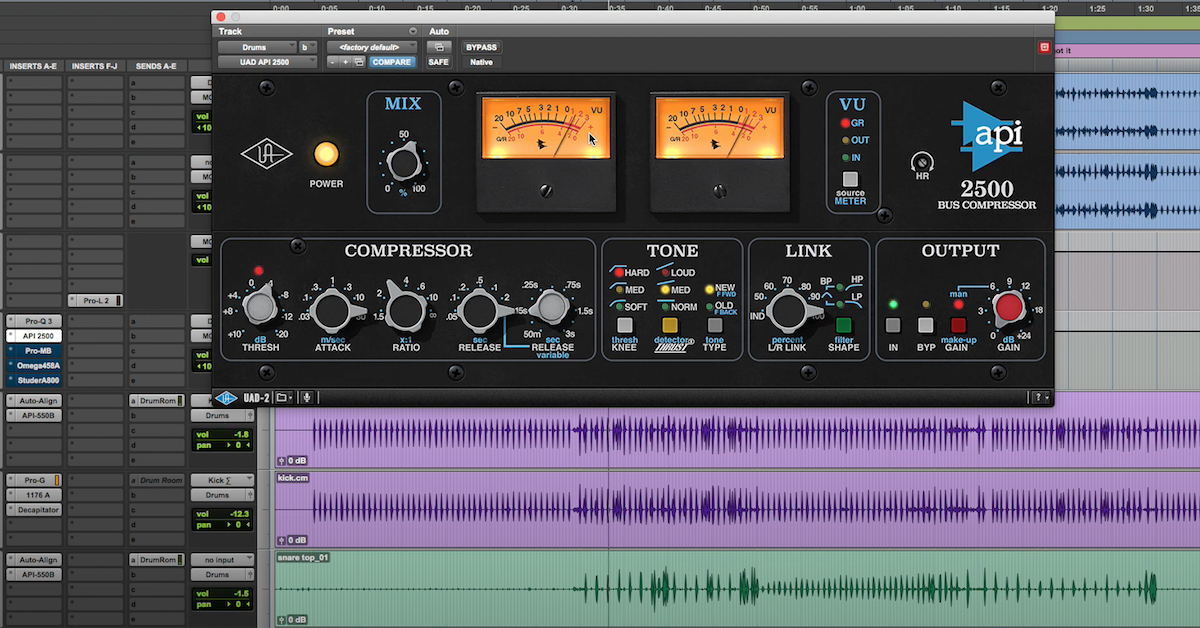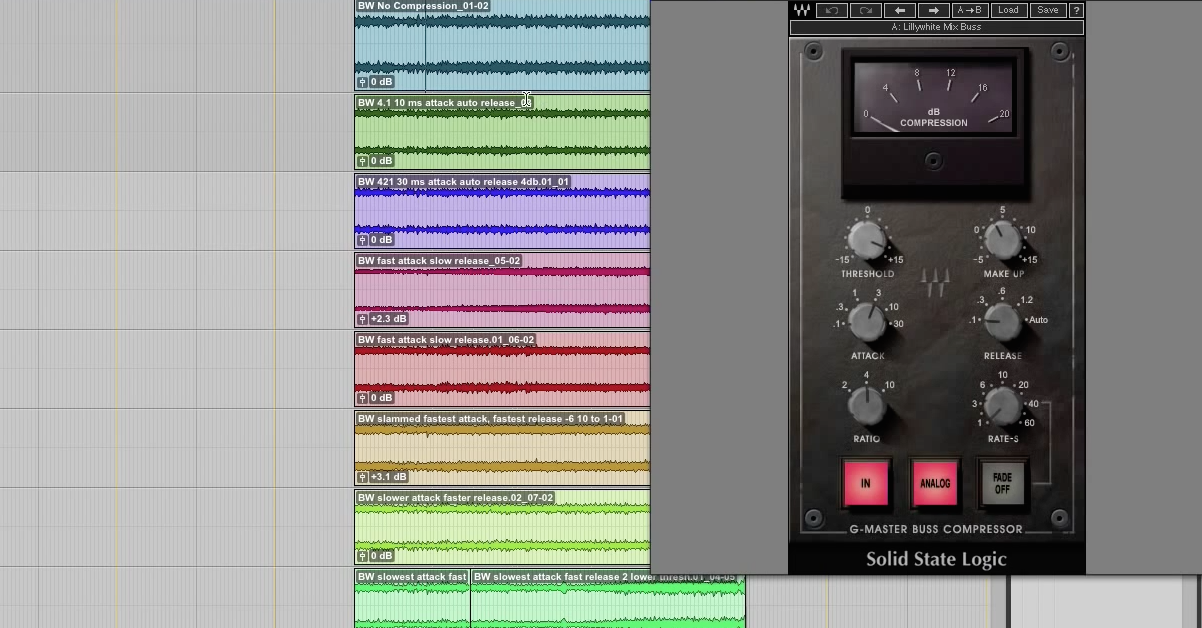Mix Buss Processing: Do’s and Don’ts
Article Content
We have all these tracks in a recording — guitars, bass, drums, vocals, synths, samples, whatever — and they all come down to a single stereo channel called “the mix buss”. What do we do with this stereo channel? Do we leave it untouched? Do we “master” our own record? How much headroom should we leave? If you’re new to navigating the mix buss, or a veteran looking for some fresh perspective, here’s a list of do’s and don’ts that should open your eyes to opening those ears!
DON’T: Rely on your mastering engineer to finish your record. It’s your record — make it sound how you want. That includes mix buss processing! However…
DON’T: Put on processing for the sake of making the record louder if you are sending your mix to be mastered. Processing designed to make playback levels louder often come with compromises and will handcuff your mastering engineer’s ability to do their job.
DO: Automate your mix buss level fader. Automating song sections or transitions to move up or down in subtle amounts (think 0.5db increments) can add a great deal of impact and help keep the listener engaged.
DO: Experiment with mixing into a compressor. Once you get a basic balance of your tracks, try putting a compressor on the mix buss and mixing from there. This works for some people and doesn’t work as well for others — but give it a go and decide for yourself. This can go for EQ, saturation or any other processing.
DO: Learn the power of a sidechain filter on mix buss compression. It’s an invaluable tool that can turn an unusable compressor into the best sound you’ve heard.
DO: Experiment with your attack and release times on compression as well. There are many ways to set a mix buss compressor and it’s worth getting your ear around them. Listen to things like groove, cohesion, dynamics, and balance — because compression can effect all of those for better or for worse.
DON’T: Hold back on choice of processors. There’s no rule against using compression, EQ, saturation, an imager, excitement, mid-side processing, multiband compression or whatever else you may want. My only caution would be that whatever you do is effecting everything, so little moves tend to go much further. Even a touch of limiting can sound good if you do it thoughtfully. Experimentation is the key.
DO: Consider that your mix buss might not need any processing at all. That’s still a conscious choice you as the mixer get to make, and it’s as valid as anything else.
DO: Try to leave yourself a little bit of headroom before processing. In the digital world, how much room isn’t so important. What’s important is that you don’t cause any unwanted clipping along the way.
DON’T: Be afraid to adjust something within the mix as a result of your mix buss processing. Sometimes you get something really cool going on the mix buss, but it effects the balances or a single element in a negative way. There’s no law against getting your mix to cater to the mix buss processing if something really great is happening there.




